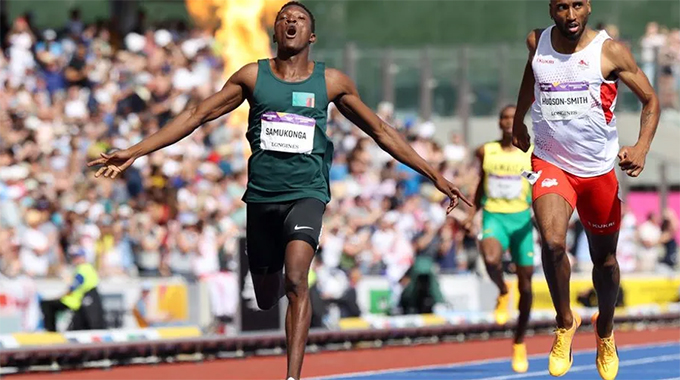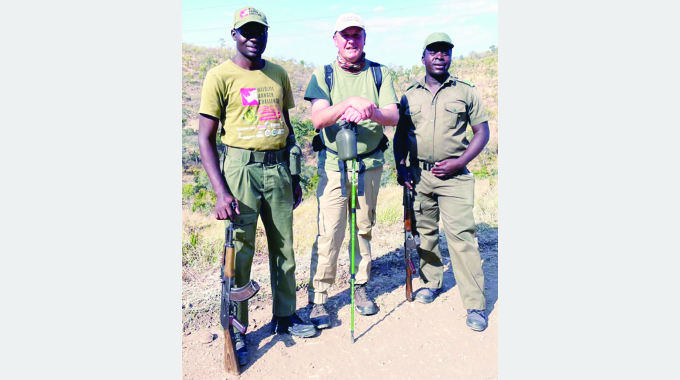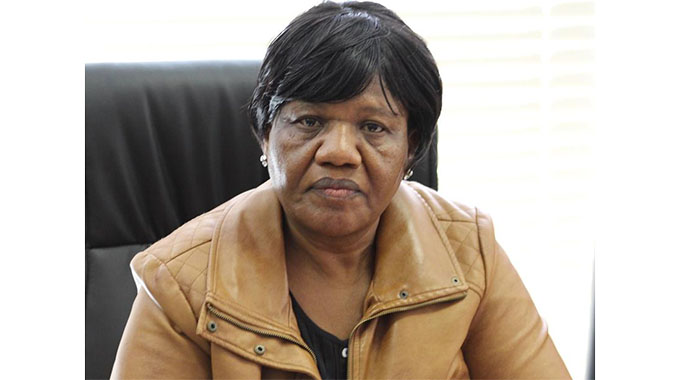EDITORIAL COMMENT: Athletics, netball need to up their game

THE 22nd edition of the Commonwealth Games ended on Monday in Birmingham, England, where a number of African athletes performed extremely well with the continent’s sporting powerhouse Nigeria the top-performing African country following a record haul of 35 medals.
Africa’s most populous nation topped the continent’s medal table for the first time since 1994, with South Africa second and Kenya third.
What is interesting to note is most of these medals won by Nigeria, South Africa and Kenya were harvested in athletics’ track and field events where athletes from these three African countries went toe-to-toe with world powerhouses such as the hosts England, Australia, who topped the overall medals’ table, and Jamaica.
The track and field events, which were the highlights of this year’s Commonwealth Games, also delivered two surprise packages in Zambia and Botswana, who, for the first time in their history of competing at the Club Games, were able to walk away with a number of medals.
The biggest surprise at these Games was Zambia’s teenage sprinter Muzala Samukonga who won his country a gold medal in the men’s 400m event.
He went a notch above the Botswana men’s 4x400m relay team who also did themselves and their nation proud by picking a silver medal at the same Games.
These two medals — a gold by Samukonga and a silver by Botswana’s 4x400m men’s relay team, were celebrated across the southern African region, including Zimbabwe who, unfortunately are no longer part of the Commonwealth family and our athletes were unable to participate at this year’s Club Games in Birmingham.
But it is the way that our regional counterparts Zambia and Botswana are making strides at the big stage that has badly exposed how we are lagging behind in our grassroots development programme, especially in athletics.
In fact, at one stage, Botswana and Zambia were way behind Zimbabwe when it came to producing world-class athletes in track and field events; and road running competitions.
Since the attainment of Independence in April 1980, Zimbabwe was just blessed with top notch athletes in road running such as Tapfumaneyi ‘’Tap Tap’’ Jonga, Brian Sheriff, Esau Magwaza, Stanley Mandebele, Phillemon Hanneck, Nicholas Nyengerayi, Tendai Chimusasa and Abel Chimukoko who all raised the country’s flag sky high at major international events.
Zimbabwe’s history of male sprinters boasts of names such as Artwell Mandaza, Partson Muderedzi, Fabian Muyaba, Savieri Ngidhi, Elliot Mujaji, Christopher Madzokere, Kenneth Harnden, Nikela Ndebele, Arnold Payne, Phillip Mukomana, Talkmore Nyongani, Jeffrey Maswanhise, Jeffrey Wilson, Lloyd Zvasiya, Ngonidzashe Makusha, Brian Dzingai, Lewis Banda, Felix Kamangirira, Gabriel Mvumvure and Francis Zimwara. The list goes deep.
But we are no longer able to produce such talented athletes and one wonders why?
The National Athletics Association of Zimbabwe this week admitted there are gaps that have to be addressed for local athletes to reach the level that our regional counterparts such as Zambia and Botswana have reached at major international competitions which include the Olympic Games, the World Athletics Championships, World Junior Athletics Championships and the Commonwealth Games.
It’s not a secret that the likes of our neighbours South Africa, Botswana and Zambia have been on the rise, getting medals in these top competitions.
Botswana’s recent achievements include a gold medal won by their 19-year-old sprinter Letsile Tebogo, in 100m, at the World Under-20 Championships in Colombia. He also picked a silver medal for 200m at the same meet.
Tebogo set a new World Under-20 record when winning the 100m final in 9.91seconds to lower the previous record of 9.94seconds he had set at the World Championships in Oregon, United States, last month.
Zimbabwe had two athletes at the World Under-20 Championships and could not go past the heats.
At the World Championships in Oregon, United States, the best performance for Zimbabwe was from Isaac Mpofu, who finished in position 10 in the men’s marathon and also set a new national record.
However, it is the success being registered by their regional counterparts that puts the National Athletics Association of Zimbabwe on the spotlight.
And NAAZ president, Tendayi Tagara, admitted in an interview with The Herald this week that they were lagging behind in their grassroots development programme and highlighted some of the concerns he believes are hindering progress of local athletes.
Tagara, who has been at the helm of NAAZ since November 2012, said a lot of things are hindering their progress and these include lack of proper facilities and investment in sport which hinders retention and sustainability of athletes when they graduate from the school system.
“Countries like Botswana and Zambia have taken a deliberate move to support athletics. Botswana, they have constructed so many sports stadiums with tartan track which they are even underutilising. It means the athletes do their training in the best stadiums,’’ Tagara said.
He also called for the Government to give more financial and material support to local National Sport Associations if Zimbabwe are to make a mark at regional and international competitions.
But taking a closer look at home, in athletics, Zimbabwe still has three tartan tracks at the National Sports Stadium and the University of Zimbabwe which we feel are being grossly underutilised by the local athletics clubs.
Most of them argue that they are being charged exorbitant fees by the owners of these facilities when they want to take their athletes to train there and also use these facilities for competitions.
But Tagara didn’t tell us whether an approach was made to the custodians of these facilities to lower their fees or to let athletes train there for free, especially at the National Sports Stadium which is a Government-owned property.
Certainly a solution can be found to let our up-and-coming athletes train at this giant facility if the Government is approached through proper channels.
Super talent is there in Zimbabwe but for it to be harnessed and nurtured well it needs to be exposed to international facilities and NAAZ must take a cue from Botswana and Zambia; and approach the Government through the Sports Commission and the parent Ministry of Sport to let our talented young athletes train at the National Sports Stadium for free if we are to rise above Zambia and Botswana as a regional powerhouse in track and field events.
Apart from facilities, Tagara said lack of funds is an obstacle in retaining and sustaining athletes when they graduate from the school system.
“We have dominated the juniors in regional competitions. When the school system ends, the association must have financial strength through the Government support to take over… I think that’s what we only need. It’s the financial support.
“The federation must take over after the school system… There must be long-term camps, that’s the spirit.
“Sport is money. When ZOC (the Zimbabwe Olympic Committee) and NAAZ combined in a marathon, we all saw the results… I am happy the Ministry of Sport have seen it and they are now supporting athletics.
“For the first time in 17 years we got support from the Government for the air tickets to Mauritius, the World Championships, and the World Junior Championships. That to us is a positive thinking, it’s a good indication,” said Tagara.
The NAAZ president believes if the Government continues to avail support for their endeavours, the situation will change for the better.
NAAZ must also try to turn their association into a big brand by helping local clubs to produce world class athletes who will compete at the same level with their counterparts from South Africa, Botswana and Zambia; and we are sure this will attract sponsorship from the corporate world.
Sponsors want to be identified with winners and it’s so sad to note that our other potential ‘’big brand’’, the senior national netball team, the Gems, have also failed to lure meaningful sponsorship following their eye-catching performances at the 2019 Netball World Cup in Liverpool, England, where they finished in a credible eighth place.
In fact, before they flew out to Liverpool for the Netball World Cup, a number of sponsors were stepping on each other’s toes as they jostled to be part of the Gems family as they prepared to compete at this global netball jamboree.
And after the Gems did themselves and the nation proud by finishing in the top 10 at the 2019 Netball World Cup, their so-called sponsors surprisingly vanished into thin air.
After the Netball World Cup, the Zimbabwe Netball Association leadership should have gone into overdrive in selling the Gems to the corporate world as they were now a big brand capable our attracting a number of major sponsors just like what our once beloved Warriors of football used to do during the ‘’Dream Team’’ era of Reinhard Fabisch in the early 1990s.
Sadly, ZINA are still living or confined in their comfort zone as they haven’t done enough to take netball to the masses, especially to schools where there’s a lot of untapped talent which needs to be unearthed.
ZINA should steal a page or two from Netball South Africa’s development programme which has seen hundreds of young girls taking up the sport since Cecilia Molokwane took over as president of Netball South Africa in 2017.
Only last weekend, Hoërskool Dr E.G. Jansen in Boksburg was abuzz as schools from around South Africa took to the court for the DStv Schools Netball Challenge national finals.
Over 500 players from all nine provinces gathered in Boksburg for the two-day schools’ netball tournament which offered a platform for players from all schools (urban and rural areas) to get to experience the sport on the same level.
Schools were also given the opportunity to get trained by the top coaches and players from the Telkom Netball League across South Africa in two-day coaching clinics to prepare for the competition.
Over 3 500 schools across South Africa heeded the call to be part of the second edition of the tournament, with over 70 000 girls in the Under-19 division and only 47 schools qualified for the final round.
And what sight it was to see these young girls battling for the top honours in a colourful carnival atmosphere in Boksburg; and no wonder why South Africa are currently ranked as the fifth-best netball-playing nation in the world.
Athletics and netball can easily become part of our most popular sporting disciplines, joining the likes of football, cricket and rugby at the ‘’top table’’ but we feel these two sport codes need a vibrant and dynamic leadership which can take them to another level.
It’s high time they stop whinging about the Government not rendering them enough financial support. They need to put their houses in order and come up with a good developmental blueprint which they can present to potential sponsors who will in turn bankroll their grassroots programmes which will help produce world-class athletes.
This will help Zimbabwe to become a regional and continental powerhouse in sport.











Comments